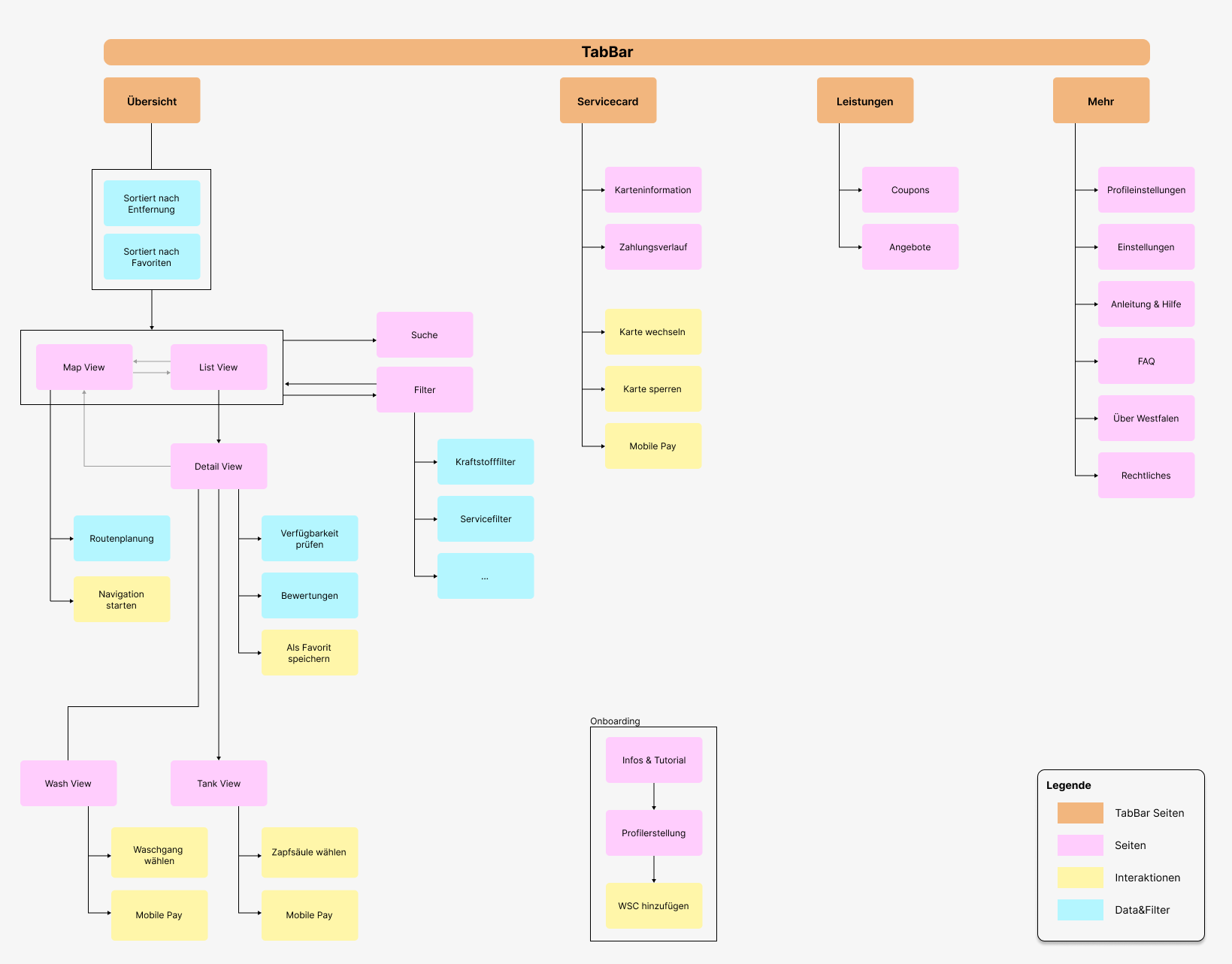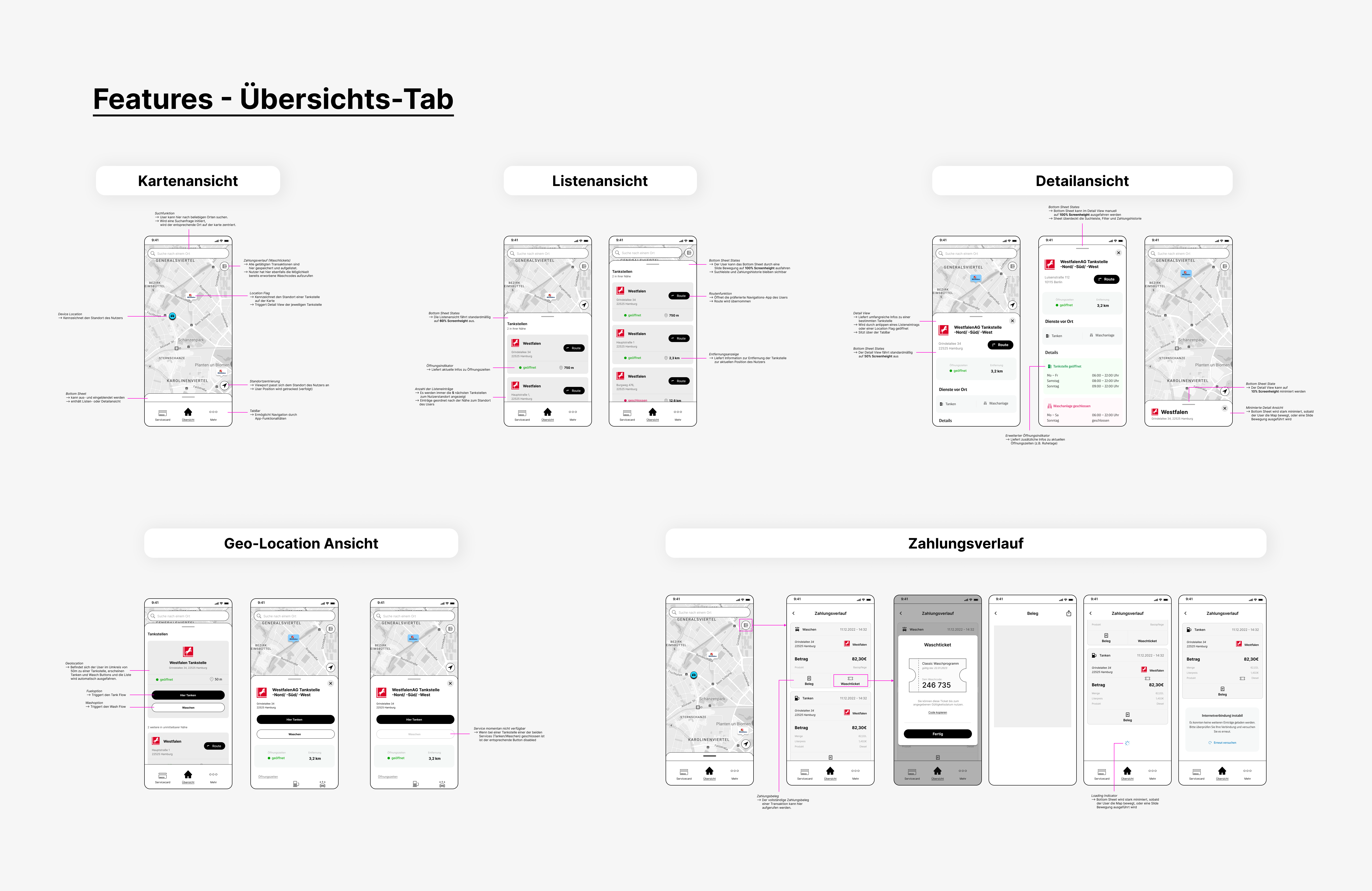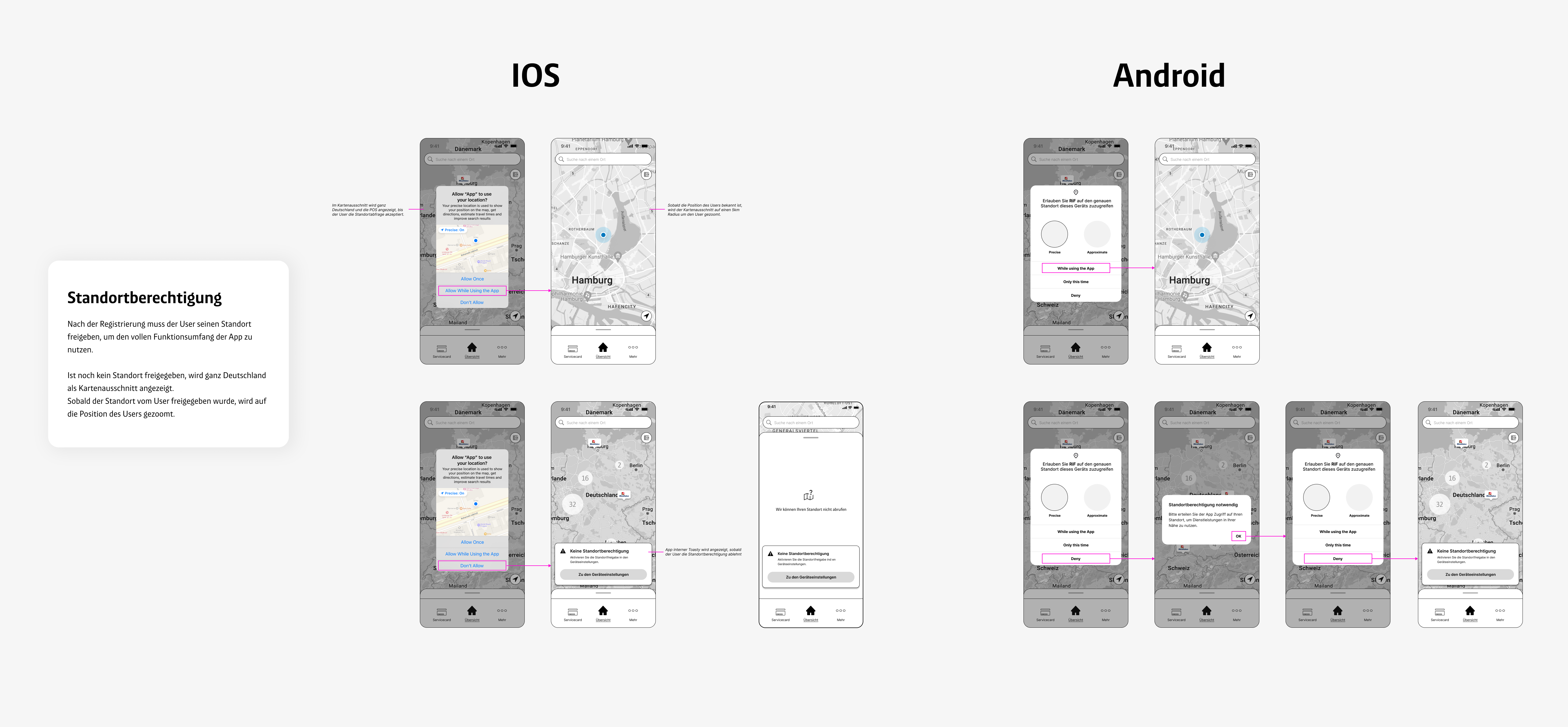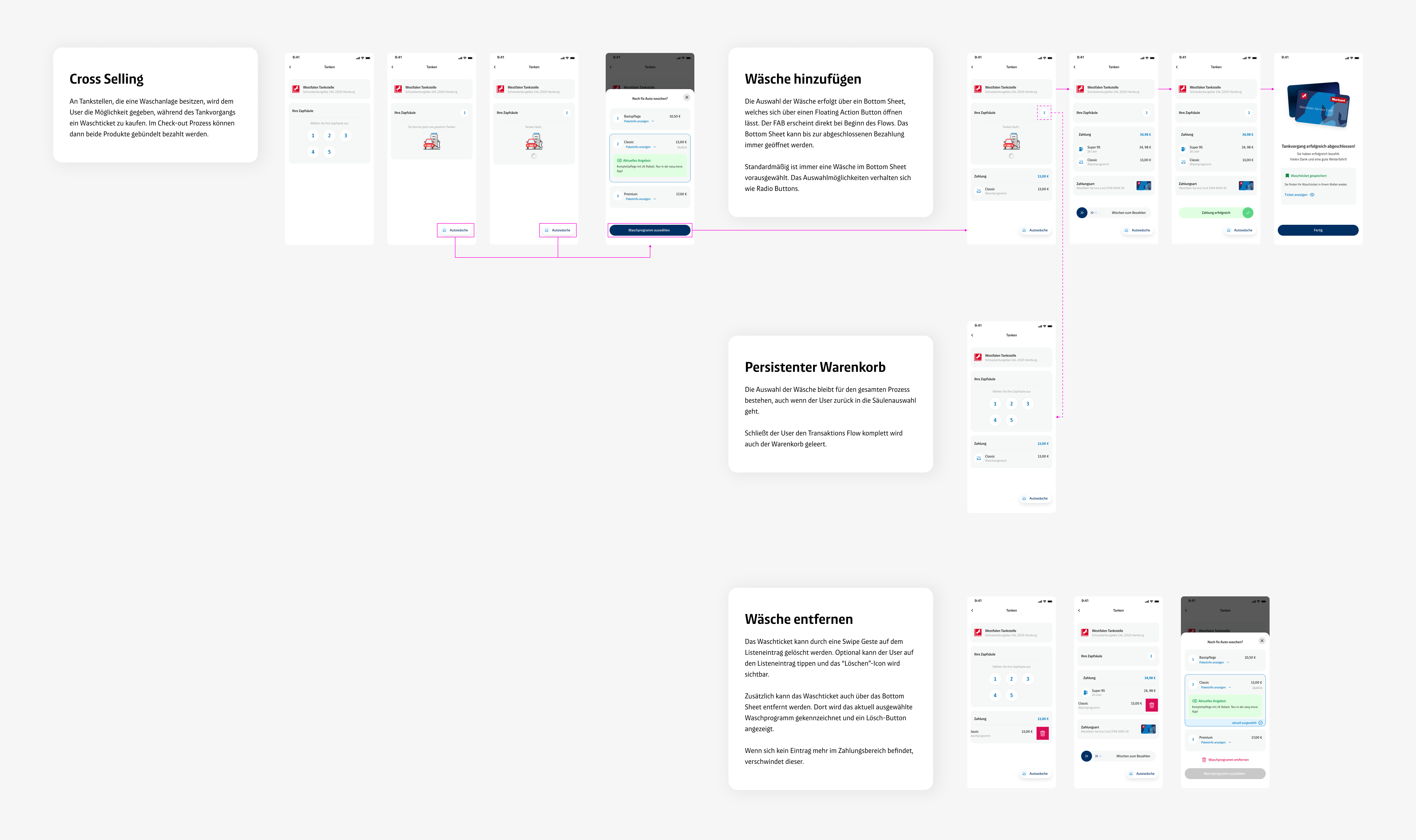It all started with tons of research and colorful sticky notes.
Wireframes for every screen inside the app had to be created.
The Wireframes and flows were tailored to the specific functionalities of each OS.
I created every User Flow including error cases & edge cases.



